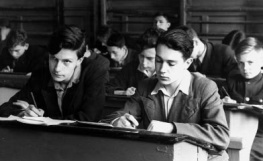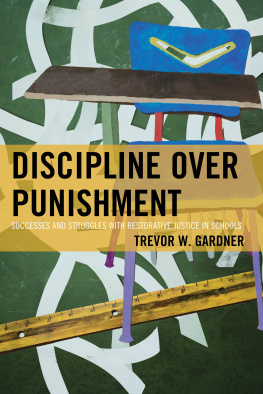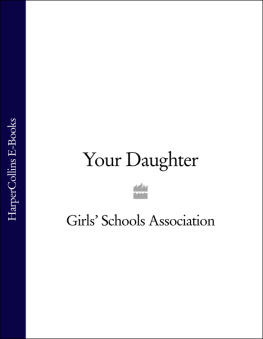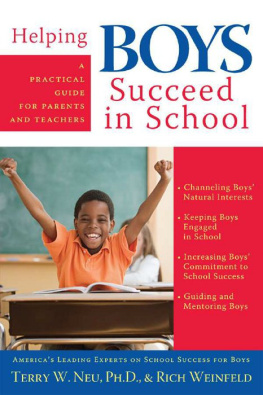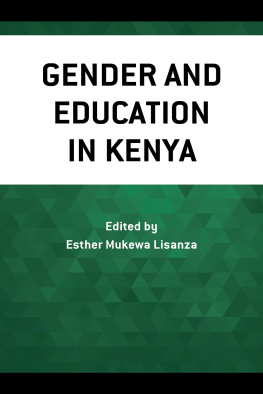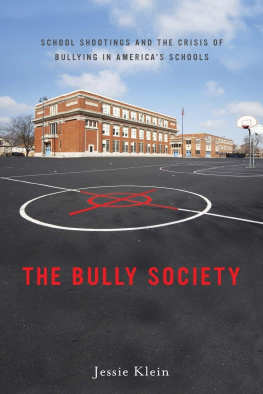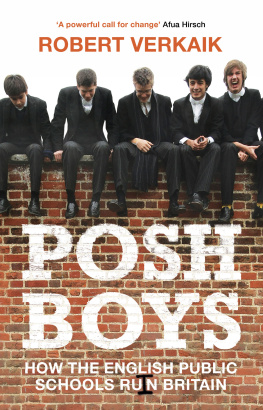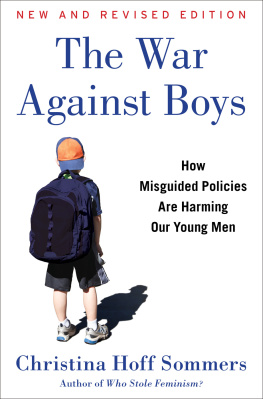Acknowledgments
My interest in Soviet separate schools in the 1940s and 1950s came about through a complex relationship between a historians fascination with primary sources that reveal an unfolding array of social practices, a desire to find ways that historical understanding can inform contemporary policies, and a developing concern about the tensions involved in the enactment and enforcement of gender roles in educational contexts. To the extent that this topic is located at these multiple points of intersection, it has always been more than a research exercise; it is also an opportunity to work through a whole series of professional issues that have been as enlightening for me as I hope they prove engaging for those interested in Stalinism, the comparative history of education, and the significance of gender in schools.
A remarkable level of financial support for this project has been generously provided by the Spencer Foundation, and I wish to thank the president, Michael McPherson, and the program officers, Annie Brinkman and Maricelle Garcia, for their assistance. The Spencer Foundation is a rare resource for scholars of the comparative history of education, and I am very grateful for this continued support of my research. Additional financial support for this project was offered by the National Council for Eurasian and East European Research, under authority of a Title VIII grant from the U.S. Department of State; neither NCEEER nor the U.S. government is responsible for the views expressed within this text. I also received funding from the Virginia Tech Department of History, the College of Liberal Arts and Human Sciences, and the ASPIRES program. An earlier version of chapter 4 was published as The Repudiation of Single-Sex Schooling: Boys Schools in the Soviet Union, 19431954, American Educational Research Journal 43, no. 4 (Winter 2006): 62150.
Research for this project was conducted in numerous archives and libraries, and I wish to express my appreciation to the many archivists and librarians who offered assistance during numerous visits to these facilities: Archive of the President of Kazakhstan; Central Archive for Public Movements in Moscow; Central State Archive of the President of the Republic of Kazakhstan; Central Archive of the City of Moscow; Russian State Archive of Social and Political History; Russian State Archive for Literature and Art; Research Archive of the Russian Academy of Education; State Archive of the Russian Federation; Russian State Library, Russian State Pedagogical Library, National Library of Kazakhstan, and academic libraries at Stanford University, the University of Illinois at Urbana-Champaign, and the University of Virginia. Research materials from the State Archive of the Republic of Uzbekistan were provided by Khurshida Ismailovna Abdurasulova, who sent copies of documents and transcripts of sources, for which I am very appreciative. At the Library of Congress, Grant Harris and his colleagues at the European Reading Room offered particular assistance with newspapers and other published materials. At Harvard College Library, Hugh Truslow helped to identify the photographs from the Soviet Information Bureau collection that appear throughout this book as illustrations. At Virginia Tech, the staff of the Interlibrary Loan department provided efficient, reliable, and consistent service that facilitated my research.
At Northern Illinois University Press, the encouragement and assistance offered by Amy Farranto, Susan Bean, Julia Fauci, and their colleagues has been much appreciated. I am especially indebted to the careful comments from the two readers solicited by the press. Over the years, this project has benefited from the advice, criticism, and encouragement of many colleagues, and I wish to thank them for their valued professional service: James Albisetti, Mark Barrow, Joseph Bradley, Greta Bucher, Kathleen Canning, Jean Clandinin, Ning de Coninck-Smith, R. W. Connell, Rebecca Friedman, Margaret Gallego, Wendy Goldman, Eva Jeppsson Grassman, Heather Gumbert, David Hicks, David Hoffmann, Sandra Hollingsworth, Larry Holmes, Kathleen Jones, Greta Kroeker, Ann Livschiz, Sara Mead, Amy Nelson, Jan Nespor, Douglas Northrop, Donald Raleigh, Roy Robson, Rebecca Rogers, Christine Ruane, Helen Schneider, Elena Silva, Barbara Ellen Smith, Robert Stephens, Ronald Suny, Daniel Thorp, William Wagner, Peter Wallenstein, Marcus Weaver-Hightower, and Elizabeth Wood. Amy and Claire know better than anyone else what I have invested in this project, and how much I depend on them for support, encouragement, and love. I regret that my research trips and the writing process have taken time away from our family life, even as I look forward to reclaiming that time as this project comes to an end.
Introduction
Why Single-Sex Schooling?
Where does the idea come from that girls are worse than boys at math, physics, and chemistry? This question, asked in a 1950 letter by student Liudmilla Chernogubovskaia, responded to the Soviet policy of separating boys and girls in urban schools. Complaining that separate schools assumed boys understand technology better than girls, Chernogubovskaia traced these patterns to adult influences on the youngest children: As soon as a baby begins to understand anything, toys are bought: motor vehicles and construction toys for a boy, dolls and kitchen dishes for a girl. Recalling how coeducation challenged her to surpass boys, Chernogubovskaia complained that in an all-girls school, her younger sister interacts with boys at evening events at school and in homes [and] judges them, in effect, by how well they dance.
Chernogubovskaias letter calls attention to the complex factors shaping gender identities even in the authoritarian context of the Stalinist school. Beginning in 1943, separate schools for boys and girls were introduced throughout Soviet cities. A quarter century after the Russian Revolution had introduced coeducation throughout Soviet education, both educational policy and school practices were now divided along sharply defined gender lines. Chernogubovskaias letter articulated the broad sense of uncertainty prompted by the transition from coeducational schools, which Soviet educators for decades had proclaimed as proof of socialist equality, to separate schools, which were introduced as a new instrument for promoting achievement and imposing order. This letter also anticipated the return of coeducation in 1954, as widespread recognition of the failure of separate schools led educators, parents, and pupils to repudiate this policy. Yet at the core of both the experiment with and the subsequent elimination of separate schools remained the basic question raised by this young womans letter: how did assumptions about gender differences shape the schooling of boys and girls? Implicit in this question was the issue of whether schools should acknowledge, embrace, and even reinforce gender differences, or whether schools should challenge, diminish, or even reject these differences to provide the same education to boys and girls.
The Soviet postwar experiment provides a unique example of a large-scale effort to use gender segregation as a tool for social engineering. Although Soviet history includes other instances of social policies aimed at changing the status of women such as marriage laws, employment policy, and reproductive rights, the decision to separate schools clearly and intentionally gendered the experiences of girls and boys. For the first time, Soviet children were told explicitly that, although their educational trajectories were supposedly exactly the same, their schooling would occur in different locations, their schoolmates would be exclusively the same gender, and their teachers would take into consideration their particular needs. During this eleven-year experiment, millions of Soviet children living in major cities became subjects of a wide-scale social reform as they attended several thousand separate boys and girls schools. While older pupils, such as Chernogubovskaia, retained some memory of coeducational schools and thus had a basis for comparing their own experiences, younger pupils, like her sister, increasingly knew only separate boys and girls schools. In fact, for many city children who began their schooling between 1943 and 1945, their entire primary and secondary education took place in separate schools, as the elimination of the policy in 1954 allowed the final class of tenth graders to graduate from separate classrooms. The significance of the Soviet experiment with separate schools thus lies specifically in the decision to make gender the defining variable shaping the practices and processes of educating children.

